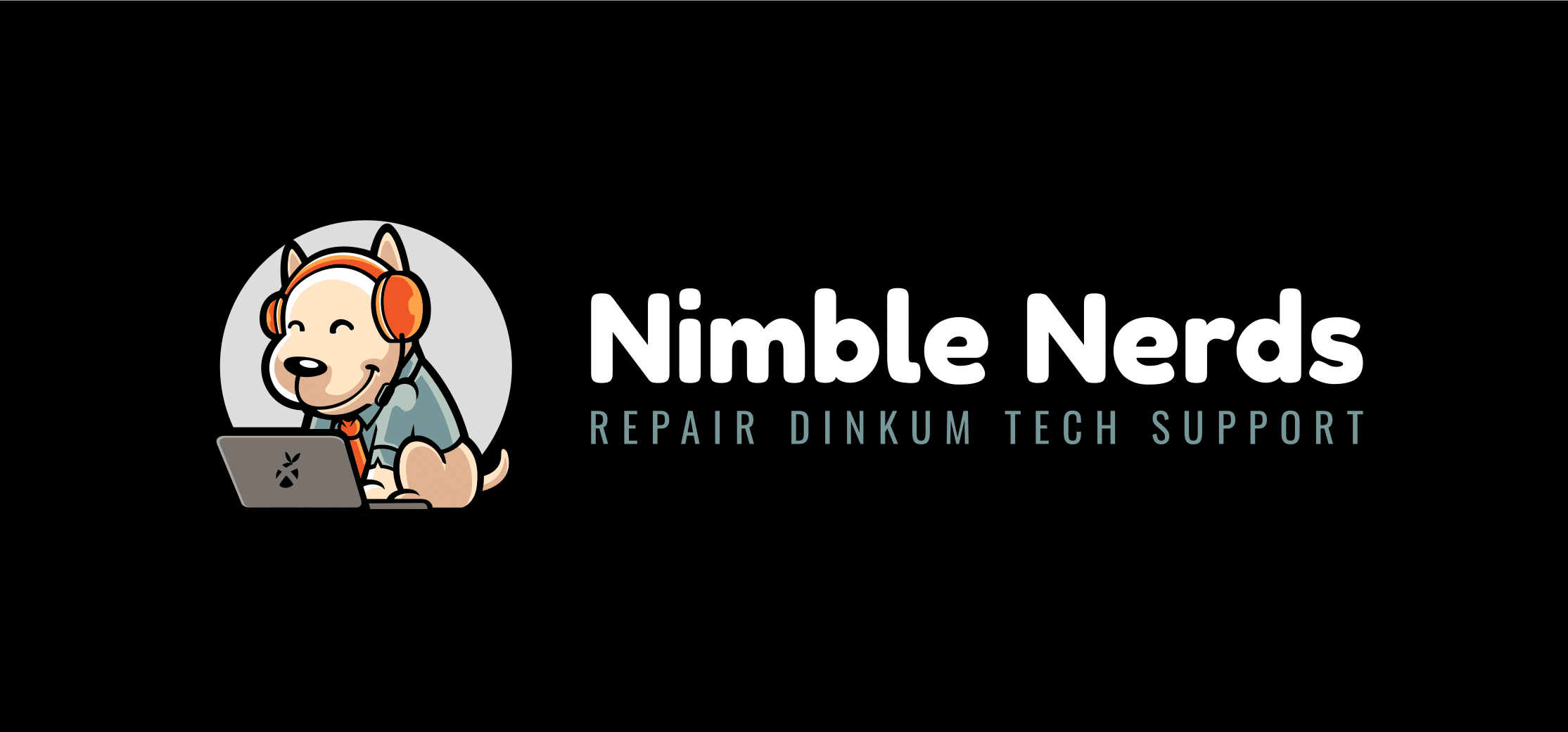Computer Troubleshooting: Hardware, Software, and Networking
Are you facing frustrating computer issues and looking for a reliable guide to help you troubleshoot effectively? Whether you’re a technology enthusiast, contemplating a career in IT or someone exploring Nimble Nerds for advice, you’ve landed in the right spot. Computers represent wonders that have connected us to a world brimming with information and opportunities like never before.
In this century, computers have transformed from calculating machines to sophisticated tools that facilitate instant communication, access to vast knowledge repositories, and boundless creativity. The swift pace of progress continues to reshape our reality, enhancing the capabilities of computers and integrating them deeply into our everyday routines.
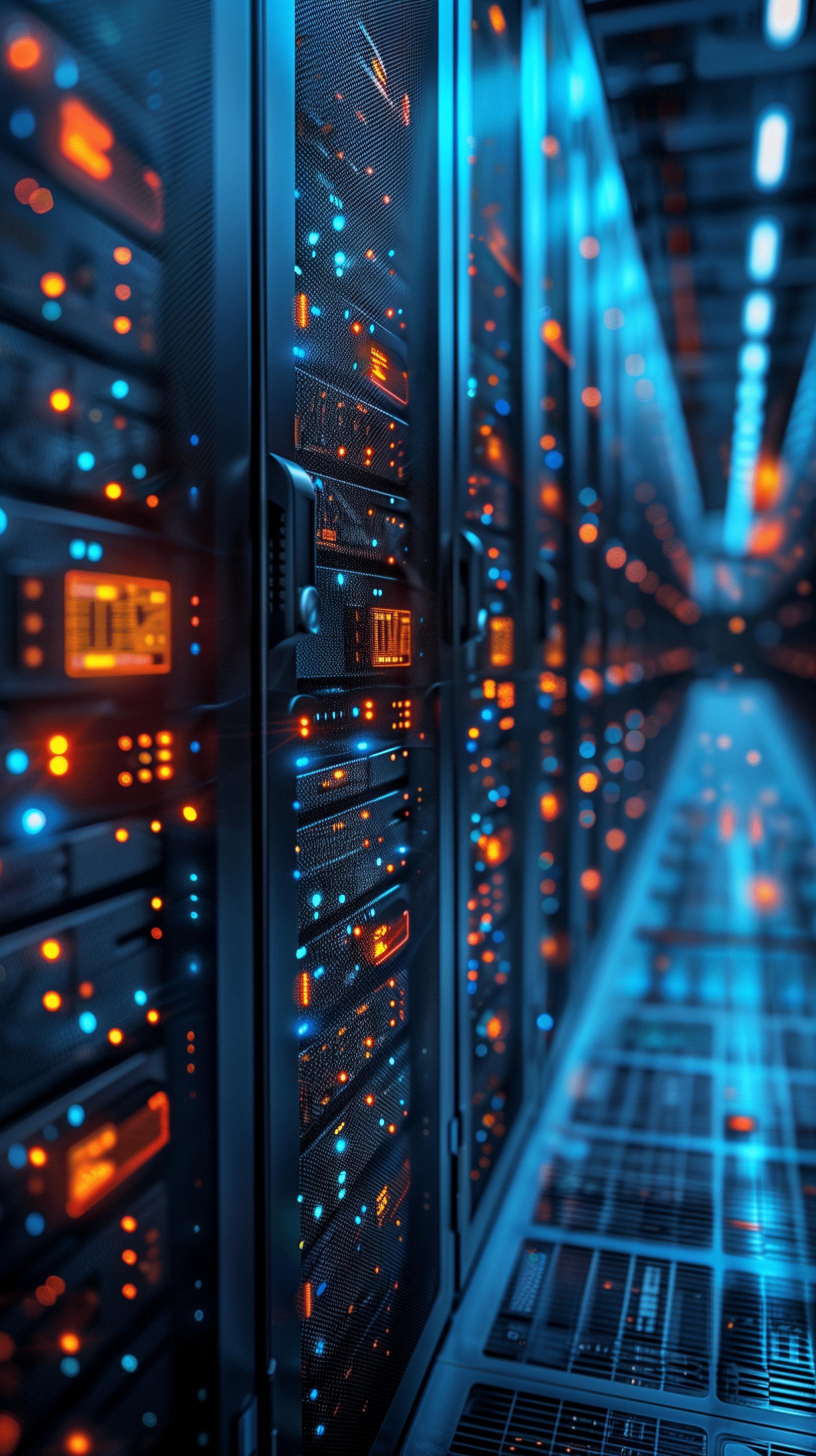
Here at Nimble Nerds, we know how stressful and pressing it can be to deal with computer glitches. That’s why we’ve put together this manual on troubleshooting computers, tailored for a group of readers—from tech enthusiasts keen on understanding their devices better to future IT experts looking to expand their skills. This manual delves into problems and presents hands-on solutions, demonstrating our know-how and aiding you in mastering the art of identifying and fixing system problems.
We will guide you step by step through a process, beginning with an introduction to the elements of computers and then delving into detailed troubleshooting techniques for hardware, software, and network issues. Our goal is to assist you in resolving problems while also equipping you with a grasp of computer functionality, thereby improving your abilities and self-assurance in overseeing your devices.
By the time you finish reading this guide, you’ll have a foundation for handling computer problems. Whether you’re looking to solve an issue or assess our methods and knowledge, we aim to offer perspectives and hands-on suggestions. Let’s start this adventure together, transforming difficulties into chances for growth and turning hurdles into progress markers.

The Heart of the Machine: Exploring Essential Computer Components
When it comes to troubleshooting computer problems, having a grasp of your computer’s parts can make a significant difference. Each computer functions as an ecosystem, with every hardware component serving a purpose to ensure smooth operations.
The CPU: The Brains Behind Operations
RAM: The Swift Memory Access
Storage Devices: The Archive Storage
The Motherboard: The Core Connection Point
The Power Supply Unit (PSU): The Energy Source
Peripherals: Enhancing Functionality
Understanding How It Works
Importance of Knowing This
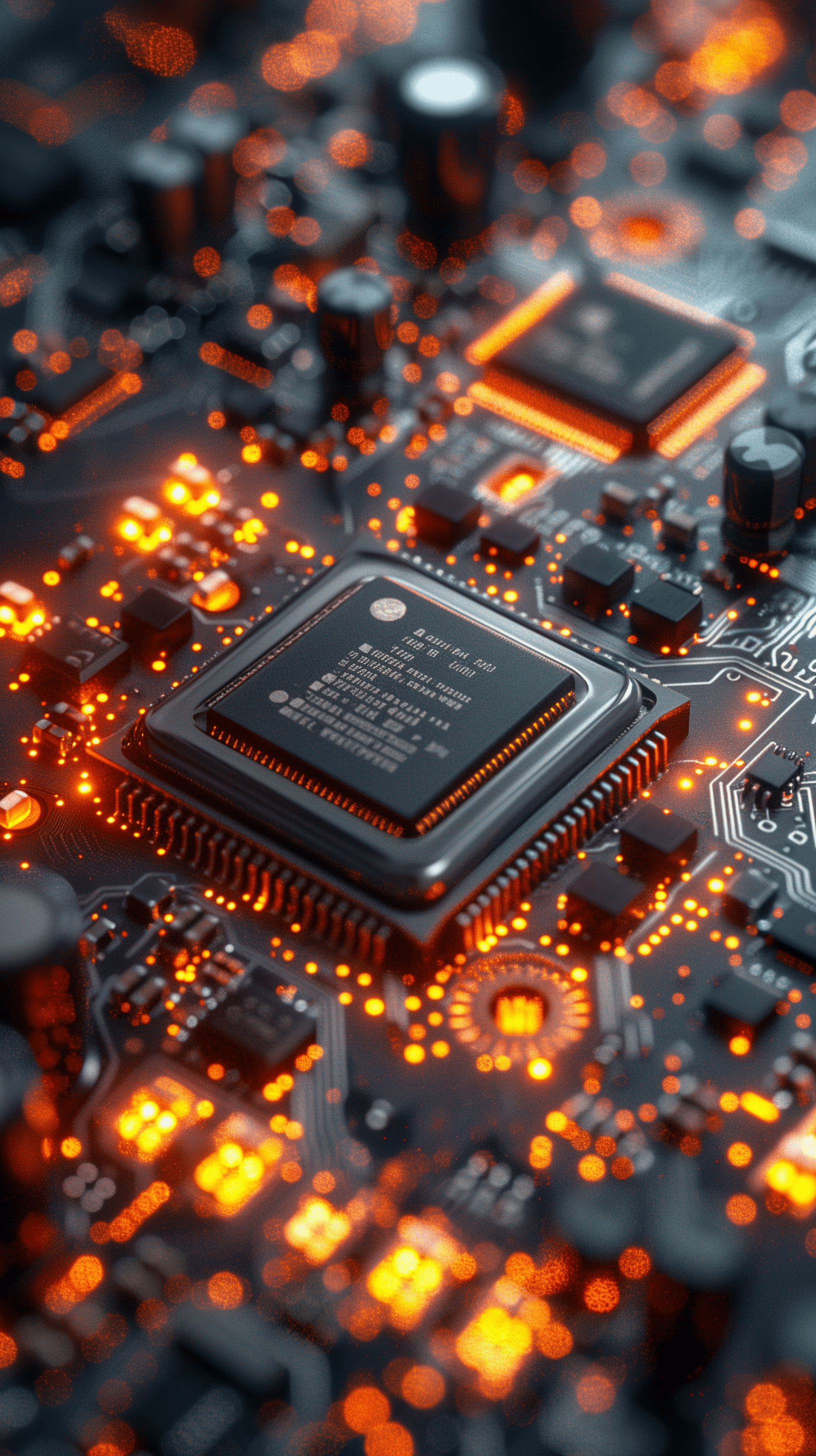

The Magic Behind the Screen: How Computers Process and Execute
Computers perform their feats through a series of potent functions: input, processing, output, and storage. It all kicks off when you, as the user, issue a command—whether that involves typing on a keyboard, clicking a mouse, or even tapping a screen. These actions are captured by input devices and transmitted to the processing unit (CPU), which serves as the computer’s brain.
It doesn’t end there! Data can also be saved on storage devices, like drives or solid-state drives (SSDs). You can easily access your files, programs, and settings whenever you require them.
Your computer depends on its hardware components working in harmony with software to operate smoothly and handle tasks efficiently. Picture the operating system as a conductor that ensures applications can utilise hardware resources. This coordination is essential for your computer’s functioning, overseeing everything from processes to functions.
Some Of Our Customer Compliments:

Tread Carefully: The Risks and Precautions of Computer Hardware Troubleshooting
Before troubleshooting hardware issues, it’s important to recognise the dangers involved. Dealing with computer hardware can be risky if proper precautions aren’t taken. Here are some key safety reminders;
Electrical Safety:
Risk of Damage:
Data Loss:
Considering these precautions, let’s proceed with a methodical approach to identifying and fixing hardware problems. By adhering to practices and utilising tools, you can troubleshoot safely and efficiently.
When a computer encounters hardware issues, it may exhibit symptoms such as system crashes, unusual sounds, or difficulty powering up. Identifying and resolving these issues necessitates an approach since hardware malfunctions can vary from simple to intricate. This segment will delve into hardware issues, essential diagnostic tools and steps, and step-by-step troubleshooting methods.
Spotting the Signs: How to Recognise Common Hardware Failures
Identifying signs of hardware failures is a part of troubleshooting computer problems. Common indicators can point towards issues with the components of a computer. For instance, if a computer doesn’t turn on or starts up inconsistently, the problem could be related to the power supply unit (PSU) or motherboard. These parts play a role in powering the system. Any malfunctions can hinder the computer boots process.
When a system experiences instability like crashes, freezes or sudden restarts, it may indicate hardware issues. Defective memory (RAM) is often to blame as it can cause behaviour when the system accesses damaged memory cells. Overheating is another culprit that can impact the CPU or GPU and result in system shutdowns or reduced performance to prevent damage. Unusual sounds like clicking, buzzing or grinding noises are typically linked to failing hardware components. For instance, a clicking sound from a hard disk drive (HDD) commonly signifies failure, while grinding noises could suggest problems with cooling fans or other moving parts.
Visual anomalies such as graphics, lines or unusual colours on the screen are often signs of issues with the graphics card (GPU).
Issues like these can arise from a malfunctioning GPU, weak connections, or an insufficient power supply. Problems with peripherals such as keyboards, mice, or printers can also be linked to hardware malfunctions. These issues might be caused by a loose power cable, monitor cable, or the devices themselves not functioning correctly.
An alarming sign of hardware failure is a smell often likened to burning plastic or metal. This distinct smell typically indicates components’ short circuits. For example, a burning odour from the case could suggest a failing PSU or a damaged component on the motherboard. In such instances, it’s crucial to power down the system immediately to prevent further damage. Additionally, inspecting for visible signs of damage, such as burnt or discoloured components, can help pinpoint the source of the issue for a more accurate diagnosis and timely repair.
Detecting these warning signs early can help prevent damage and data loss. Observing and connecting symptoms with hardware components can narrow down potential causes and focus troubleshooting efforts more effectively. This systematic approach needs to assist in identifying the issue. It also aids in applying the appropriate solution, whether it involves replacing faulty hardware, enhancing cooling systems, or ensuring proper connections. Understanding these cues is crucial for individuals who maintain or repair computer systems as it lays the groundwork for successful troubleshooting

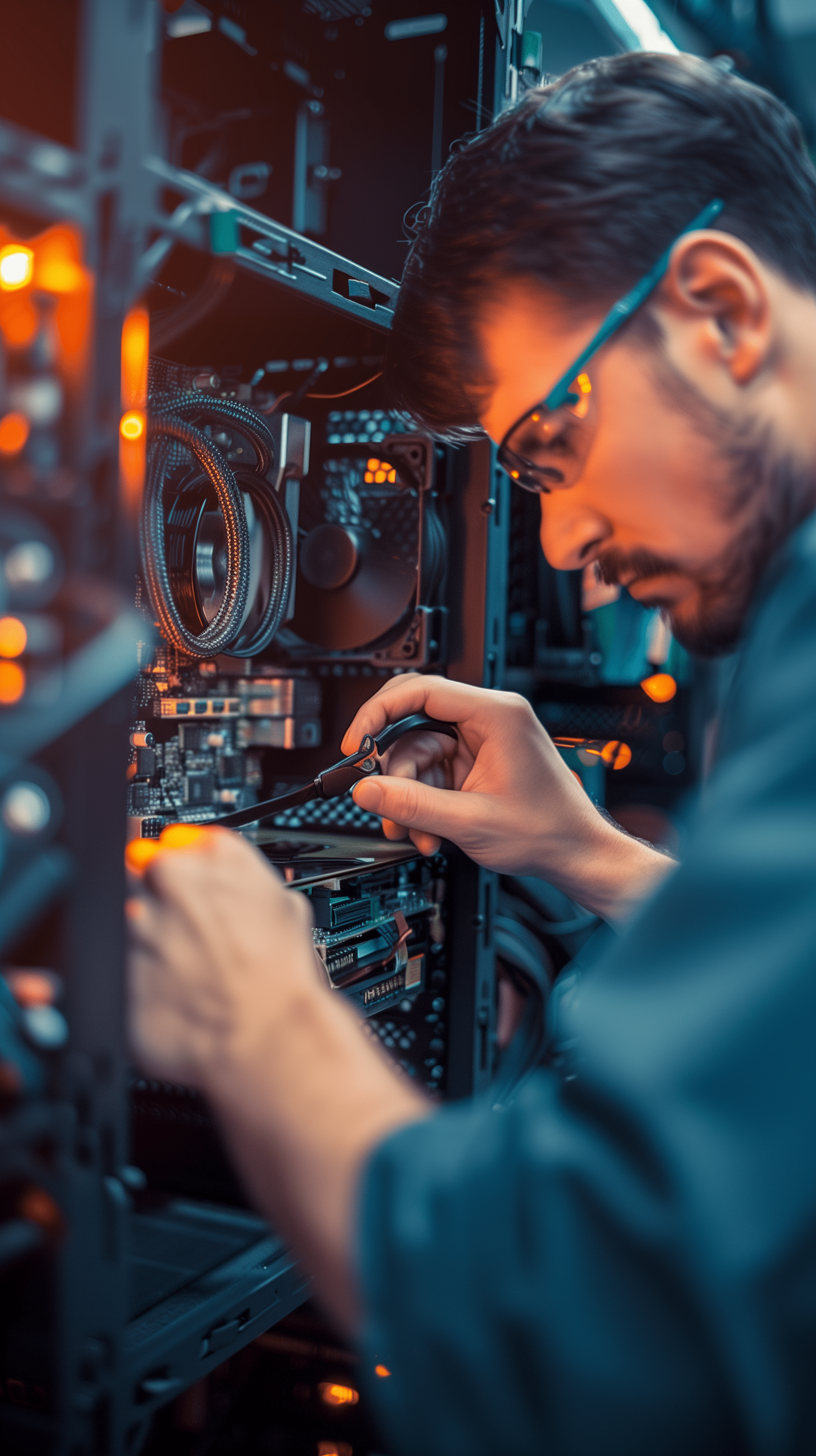
The Diagnostic Arsenal: Tools and Techniques for Computer Hardware Troubleshooting
When troubleshooting hardware problems, it’s important to start by visually and audibly inspecting the device thoroughly. Begin by examining the computer’s inside and outside for any signs of damage. Look out for burnt components or swollen capacitors as they could indicate issues, like electrical malfunctions. Ensure all connections are securely in place, as loose cables or installed parts can lead to issues ranging from minor glitches to complete system breakdowns. Listen closely for any sounds such as clicking, buzzing or grinding noises, which may signify problems with components like the drive cooling fans or other moving parts.
After completing the checkup, the next step involves utilising the system’s built-in BIOS or UEFI diagnostics. These diagnostic tools are accessible during startup and can help test hardware components like memory (RAM) and hard drives. They play a role in assessing the health of hardware elements and pinpointing potential causes of malfunctions.
For an assessment, relying on external diagnostic tools can be extremely beneficial.
For instance, a multimeter can be utilised to check the power supply unit (PSU) and confirm that it provides the voltages. This device helps determine if power-related issues are causing system instability or preventing boot-up. Moreover, specialised diagnostic software offers component analysis. Tools like Memtest86 are great for examining RAM for errors, while CrystalDiskInfo can give a health report for hard drives, highlighting problems such as bad sectors or potential failures. Stress testing applications are also accessible for CPUs and GPUs to evaluate if these parts can handle workloads without overheating or malfunctioning.
Using these tools and methods helps accurately identify hardware problems. Beginning with auditory inspections and moving on to more advanced diagnostic techniques, you can effectively pinpoint the source of the issue. This organised approach saves time and ensures a thorough investigation of all potential problems, resulting in more efficient troubleshooting tips and fixing processes.
From Start to Fix: A Comprehensive Process for Troubleshooting Hardware
When dealing with hardware problems, it’s important to take an approach. This ensures that you address all causes and don’t overlook any steps. Here is a detailed guide on how to identify and fix hardware issues;
Power Problems
If your computer won’t turn on or power up briefly before shutting down, the problem often stems from the power supply or related components. Start by checking the power source; ensure the power outlet and any power strips are working correctly. If needed, try plugging the system into an outlet. Then, inspect the power cables to ensure they are securely connected to the power supply unit (PSU) and the wall socket. To further troubleshoot, use a multimeter to test whether the PSU provides the voltages. If you suspect a PSU, testing it with a known good one can confirm if it’s causing the problem. Also, verify that the power button on your computer case is working as intended and correctly linked to the motherboard.
System Stability Issues
Frequent crashes freezes, or random restarts indicate system instability, which can have causes. One of the checks should be for overheating in your system.
Ensure all your fans are working properly and that there are no blockages in the airflow. Use monitoring software to check the temperatures of both the CPU and GPU. Components overheating can lead to instability issues. Also, test the memory (RAM) using tools like Memtest86 to uncover any errors; if any are found, try reseating the RAM or testing each module separately. Check the motherboard for any damage, like burnt parts or swollen capacitors. Additionally, ensure that the power supply unit (PSU) provides power, as an unreliable PSU can cause reboots and system crashes.


Performance Decline
Several factors could be at play if your system is running slowly, taking longer to boot up, or experiencing lag with applications. Start by examining the health of your storage devices using tools like CrystalDiskInfo to detect sectors or early signs of failure in HDDs or SSDs. Ensure your system has RAM for its requirements; upgrading RAM often helps improve performance problems. Monitor CPU usage and temperature levels, as high temperatures can reduce the CPU’s performance capabilities. Lastly, scan for viruses and malware, as infections can significantly impact system performance.
Unusual Sounds
Strange noises, like clicking, buzzing, grinding or whirring from your computer, could indicate hardware issues.
First, you need to determine where the noise comes from – whether it’s the power supply unit (PSU) fans, hard drive or other components. Ensure all fans are spinning properly and are clean, without any dust or blockages, as blocked or malfunctioning fans can create noise. If the noise comes from the hard drive space and sounds like clicking or grinding, it could mean an issue. It’s important to back up your data and consider replacing the hard drive. A buzzing sound might indicate a failing PSU, which should be swapped out to prevent harm.
Visual Glitches
If you see graphics, lines, or strange colours on your screen, these are signs of glitches often related to problems with the graphics card (GPU) or monitor. Start by checking that your monitor and cables are properly and securely connected. If you have a graphics card, try reseating it to ensure a connection. If the problem persists, test with a GPU. Switch to onboard graphics if possible. Also, ensure your graphics drivers are current since outdated drivers can lead to display problems.
Peripheral Troubles
When peripherals such as keyboards, mice, and printers are encountered, the experiencing issues usually stem from connection troubles or driver problems.
Ensure all the cables connected to the peripherals are properly plugged in, and try USB ports if you have them. Testing with devices can help determine whether the issue is with the peripheral or the computer itself. Updating the drivers for these devices can also help fix any functionality problems.
Unusual Smells (Burning Odor)
If you notice a smell like burning plastic or metal, it’s a clear sign of hardware trouble. When you smell this, turn off the system. Unplug it to avoid more damage. Open up the case. Check visually for any burnt parts near the PSU, motherboard, and GPU. Sniff each component carefully to pinpoint where the smell is coming from. Once you find it, replace that part to get things back to normal and prevent any dangers.
By following these steps, you can effectively do so. Fix various hardware issues. This systematic approach ensures that all possible causes are considered and helps implement solutions.


Expert-Level Fixes: Navigating Advanced Computer Hardware Troubleshooting
When faced with hardware problems that are hard to diagnose, you may need to take more advanced steps. One crucial action is updating the motherboard’s BIOS. Updating the BIOS can often solve compatibility issues with hardware components and fix bugs that might be causing system instability. It’s important to follow the manufacturer’s instructions when updating the BIOS, as an incorrect update could lead to complications.
Sometimes, if a specific faulty component is identified, replacing the hardware might be the best course of action. Whether it’s a failing power supply, a damaged graphics card, or defective RAM, replacing the part can restore system functionality. However, to prevent issues, it’s essential to ensure that any new components are compatible with the existing system.
If these troubleshooting methods don’t fix the issue, it may be necessary to seek help. Complex hardware problems may require knowledge and tools beyond what an average user possesses. Seeking assistance from a technician can offer the expertise required to diagnose and resolve issues effectively and accurately, ensuring that your computer gets fixed properly and promptly. This step is particularly crucial when data or system operation is at stake.
Software Sleuthing: A Comprehensive Guide to Resolving Application and System Issues
Problems with software can show up in forms ranging from applications suddenly crashing. The system is running slower due to more serious issues such as operating system failures. Figuring out and fixing software problems usually requires a method compared to dealing with hardware issues, concentrating on system setup conflicts in software patches and the possibility of malware infections. Here, we’ll delve into software glitches, tools for diagnosis, and troubleshooting steps laid out step-by-step.


Digital Dangers: The Risks and Precautions in Software Troubleshooting
Before delving into software problem-solving, it’s crucial to understand the risks and lasting impacts that can result from mishandling software issues. Here are some important points to keep in mind;
Data Loss:
System Stability:
Malware and Security Concerns:
System File Corruption:
Irreversible Modifications:
Be mindful of software licensing and integrity to avoid changes that could cause licensing problems or make the software unusable. It’s important to maintain a record of your software licenses and ensure the integrity of your software.
When updating firmware, like BIOS or device firmware, be cautious not to interrupt the process, as it can “brick” your device, making it completely inoperable. This usually happens if there’s a power outage during the update or if you apply the firmware. Once a device is bricked, it may be difficult to repair or require services to restore its functionality.
Given these risks, approach troubleshooting software issues with care. If you’re uncertain about the necessary steps, consider seeking help from professionals. Taking an informed approach can help prevent complications and make troubleshooting smoother.


Spotting Software Snafus: Identifying Common Digital Dilemmas
Spotting Software Snafus: Identifying Common Digital Dilemmas
Software issues can appear in various forms, often leading to disruptions in how users interact with their devices. One typical sign is when applications suddenly shut down or freeze, potentially causing data loss or interruptions in tasks. Another common problem is when the computer operates slower than usual, taking longer to start up or run programs, affecting productivity and ease of use.
Users may also encounter error messages that provide codes or descriptions when performing actions. These messages are crucial for identifying the root cause of issues. Problems related to the operating system are critical, too, as they can hinder the system from starting or result in errors while using it. Driver conflicts also occur, especially when hardware devices don’t work properly due to outdated drivers.
Malware adds another layer of complexity by causing actions like pop-up ads, unauthorised access to system resources, and overall system instability. These infections pose threats to system security and performance, necessitating attention.
Various software issues contribute to these symptoms, including corrupted files that can destabilise the operating system or specific applications. Outdated software can also pose problems since older versions may contain bugs or security flaws that have been resolved in updates.
When software conflicts happen, it’s usually because incompatible programs or drivers start causing trouble, leading to glitches or crashes. Let’s not forget about the malware and viruses that can sneak into our systems, causing all sorts of headaches, from minor annoyances to serious security threats.
Spotting these software issues is key to solving them. By noticing the signs and figuring out what might be causing them, users can take steps to diagnose and resolve software problems, ensuring their systems run smoothly and securely.
Cracking the Code: Analysing System Logs and Errors for Software Diagnostics
Diagnosing software problems requires various tools and methods, like a digital investigator toolkit. One key tool is examining system logs and error messages. For Windows PC users, the Event Viewer is a resource that gives access to system, security and application logs, helping users pinpoint errors and their origins. Similarly, on macOS and Linux systems, console and log files serve as repositories for error notifications and warnings, offering insights into how the system behaves.
Another important diagnostic method involves using Safe Mode and Clean Boot procedures. Booting a computer in Safe Mode loads the necessary drivers and services to help isolate software problems by getting rid of potential conflicts from non-essential software. In Windows, initiating a Clean Boot starts the system with a set of drivers and startup programs. This technique is particularly helpful for identifying whether background programs are causing trouble as it sets up a controlled environment for testing.
System and application logs are vital for examination. Reading these logs can unveil patterns that point to software issues, such as recurring crashes, consistent error codes, or other irregularities. By delving into these logs, users can accurately pinpoint the root causes of problems.
Diagnostic software also plays a role in troubleshooting software issues.
It’s important to have antivirus and anti-malware programs to scan and remove software that could be causing problems with your system’s performance and security. In addition, tools like the Windows System File Checker (sfc /scannow) can fix system files, restoring the integrity of your operating system.
You can effectively do so by using these tools and methods. Resolve software issues. By analysing system logs utilising Safe Mode, Clean Boot, and specialised diagnostic software, users can troubleshoot various problems for a more stable computing experience.
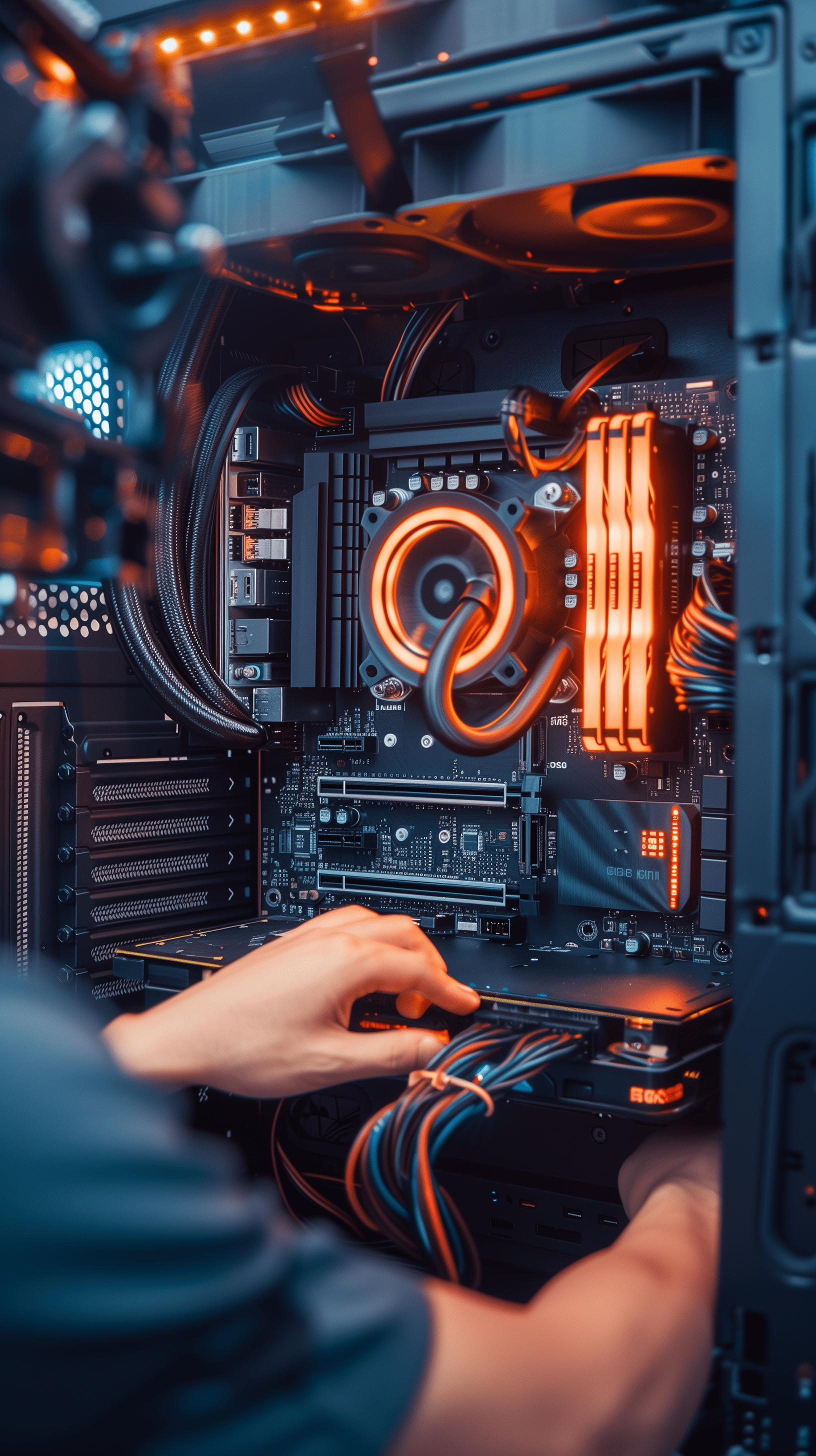

Path to Perfection: Methodical Computer Software Troubleshooting Steps
Defragmenting can enhance performance when using disk drives (HDDs), but it’s not needed for solid-state drives (SSDs). Optimising startup programs and disabling others can speed up boot times.
Resolving Error Messages
Operating System Issues
Troubleshooting Driver Issues
Dealing with Malware Attacks
Future-Proofing Your System: Essential Tips for Preventing Software Issues
Preventing software problems is crucial for maintaining a secure computing environment. A key practice is to update your operating system and all installed antivirus software, which often includes security updates, bug fixes, and performance improvements to safeguard your system and enhance its functionality.
Another step to protect your information in case of system issues, malware attacks, or accidental data loss is regularly backing up data. You can back up data to drives, cloud storage services, or network-attached storage (NAS) devices. It’s important to set up backups and ensure they are completed successfully.
Implementing security measures is also vital in preventing software problems. Use passwords for all accounts and change them periodically. Firewalls provide a layer of security by monitoring network traffic. Be cautious when downloading software from sources, as malicious software can pose risks to your systems’ security and performance. Always download from websites or official app stores. Consider using reputable antivirus tools to scan new downloads.
By following these steps, such as keeping your software updated, regularly backing up your data, and practising security measures, you can greatly lower the chances of facing software problems and guarantee that your system stays safe and runs smoothly. These actions do not safeguard your information, but they do play a key role in maintaining the durability and dependability of your computer setup.


Untangling the Web: Mastering Networking Troubleshooting
Networking plays a role in today’s technology landscape, going beyond fixing individual computer issues. Networks are the foundation of communication, data sharing, and resource accessibility in settings both large and small. With advancements, networks have evolved to handle tasks ranging from area networks (LANs) in homes and offices to expansive wide-area networks (WANs) that connect regions or even the entire world.
In the tech industry, networking is seen as an advancement for IT professionals. Moving from managing machines to overseeing network infrastructures requires a deeper grasp of protocols, hardware components and security measures. Network administrators, engineers and architects hold roles in critical environments where network performance is crucial for operations. Their responsibilities include creating, setting up and maintaining network systems that enable business functions and ensure communication.
It’s essential to note that making changes or fixing network setups without expertise can have repercussions—especially in corporate or large-scale environments. A simple mistake in configuration could result in network downtime, which could impact productivity and compromise security and data reliability. In network settings, these disruptions can affect users worldwide.
If there is a network failure in an institution, transactions could stop. Similarly, if there is an issue with a cloud service provider’s infrastructure, millions of users could lose access to services.
Considering the complexity and potential consequences, individuals need to handle network troubleshooting. Making changes or not troubleshooting properly can have consequences. When unsure, it’s advisable to seek advice from well-trained and experienced professionals. Network administrators, engineers, and architects are more than just experts in technology. They also play roles in ensuring the reliability and security of essential network services.From Drops to Delays: Recognising Symptoms of Network Issues
Networking can lead to problems that interfere with internet connections and network speed. One noticeable problem is the loss of internet access, where the computer cannot connect to the internet or a specific network. Another common issue is network speeds, causing internet or network connections to run slower than expected and affecting browsing, streaming, and downloading activities.
Frequent intermittent connectivity issues can also occur, where the connection randomly drops or disconnects at set intervals, resulting in access. Some users may have trouble accessing websites; while others load fine, others may be unreachable. This could indicate network, search engine or DNS problems. Furthermore, hardware malfunctions involving networking devices such as routers, modems or network cards can cause connectivity issues ranging from disconnection to unstable network performance.
Several typical underlying issues can trigger these symptoms. Problems with routers or modems due to hardware faults or misconfigurations cause connection disruptions. DNS issues caused by settings that hinder website loading can also be at fault. IP address conflicts that arise when multiple devices on the network share IP addresses can result in network errors and connectivity problems.
Interference with signals poses a challenge in Wireless networks. Physical barriers, like walls or furniture, as well as electronic disturbances from other gadgets, can weaken signal strength and impact network speed. Additionally, having outdated firmware on routers and modems may cause compatibility and security complications, stressing the importance of keeping these devices up to date. Moreover, incorrectly configured firewall and security settings might unintentionally block network access, causing users to face difficulties connecting to services or websites.
Recognising these symptoms and root causes is key to diagnosing and resolving networking issues. By pinpointing the problem at hand, users can apply tailored solutions, whether that means adjusting network configurations, updating firmware, or addressing hardware malfunctions. This methodical approach ensures effective network performance.


From Ping to Traceroute: Key Tools for Network Diagnostics
Troubleshooting network problems effectively starts with conducting some checks for connectivity. The initial step involves ensuring that all physical connections are in place and that essential devices like the router, modem and computer are switched on. Issues with cables or inactive devices are often the reasons for connectivity issues. Once the physical connections have been confirmed, it is recommended that these devices be restarted to reset the network connections. This action frequently addresses problems by re-establishing communication between network components.
For troubleshooting, utilising command-line tools can offer valuable insights into network operations. The ping command is useful for testing connectivity to an IP address or domain and determining if a network is accessible. It helps check whether packets are being transmitted and received successfully or if any delays or losses occur. Another command, traceroute (known as tracert on Windows and traceroute on macOS and Linux) traces the path packets take to reach their destination. This tool is beneficial for identifying points of delay or failure along the network route pinpointing areas. Additionally, using commands like ipconfig (on Windows) or ifconfig (on macOS/Linux) provides information about the network setup, including IP addresses and DNS server settings crucial for diagnosing and resolving network issues.
Router and modem troubleshooting is crucial for maintaining a network connection. Users can access the router’s web interface to review and adjust settings, update firmware, and keep an eye on network status. It’s important to check Wi-Fi signal strength, as weak signals may lead to slow or intermittent connectivity issues. Simply adjusting the router’s position or antennas can often boost signal strength and coverage.
Additionally, software tools are key to diagnosing network problems. Operating systems like Windows and macOS have built-in network troubleshooters that can automatically identify and resolve issues such as IP conflicts or DNS errors. Tools like Wireshark can capture and analyse network traffic for in-depth analysis, offering insights into data flow patterns and potential problems. This level of scrutiny is particularly handy for pinpointing issues like packet loss or network congestion.
By combining these checks with tools, users can effectively diagnose and address various networking issues, ensuring a dependable connection. This systematic approach assists in pinpointing the cause of problems and implementing practical solutions to stay ahead. This ensures issues are solved efficiently without wasting hard drive space in the processes tab.
Navigating Network Troubles: A Step-by-Step Guide to Fixing Connectivity Issues
Moreover, check if any other programs or devices use internet bandwidth and restrict their usage to enhance the overall speed
Issues with an On and Off Connection to the net
Dealing with an internet connection that keeps dropping can be quite annoying. To address this, start by examining the strength of the signal for Wi-Fi connections. If the signal appears weak, consider adjusting the position of your router or utilising a Wi-Fi extender to amplify the signal. It’s also important to ensure that your router or modem firmware is updated regularly, as these updates often include fixes for connection-related problems. If you still face connectivity issues despite these efforts, you should replace equipment like the router or modem.
Trouble Accessing Specific Websites
If you encounter difficulties accessing websites while others load smoothly, there are steps you can take to troubleshoot. Firstly, clear the DNS cache using commands such as ipconfig /flushdns (for Windows). Sudo dscacheutil flushcache (for macOS) – this can help resolve issues stemming from DNS records. Additionally, consider switching to DNS servers like Google DNS (8.8.8.8) or OpenDNS (208.67.222.222), as they may sometimes provide reliable performance. Also, review your firewall and security software applications settings to ensure they aren’t unintentionally blocking site access.


Troubleshooting Network Device Problems
You may encounter issues when dealing with network devices such as routers, modems or network cards. Begin by examining the lights on the device for any patterns, as they can signal issues. Suppose a device is malfunctioning; consider resetting it to its default settings as an option. Remember that this action will delete any configurations, so it should be considered only after troubleshooting methods are tried. Suppose the device is still covered by warranty. It appears to be defective. Reach out to the manufacturer for a replacement.
By following these steps, you can effectively resolve a variety of networking problems, ensuring a steady and dependable internet connection. This methodical approach aids in identifying the causes of issues and applying remedies.
Holistic Repairs: Combining Methods for Comprehensive Troubleshooting
Computer problems can involve hardware, software, and network issues. To effectively troubleshoot problems, it’s essential to combine methods from these areas. This section will discuss the significance of having a troubleshooting plan that utilises step-by-step troubleshooting and elimination techniques and follows recommended methods for recording and overseeing the troubleshooting process.
Solving the Puzzle: Using Cascading Troubleshooting and Elimination Methods
1. Understanding Chain Reactions
Chain Reactions: Frequently, a problem in one aspect (such as hardware) can trigger issues in another (like software). For instance, a malfunctioning hard drive could corrupt files, leading to software malfunctions. Recognising these connections is vital for problem-solving.
Interconnectedness: A computer’s components and systems are interconnected. A glitch in one component can affect others, underscoring the importance of considering the system as a whole when troubleshooting.
2. Process of Deduction
Commencing with the Basics: Start the troubleshooting process with nonintrusive checks. This involves confirming the power supply, inspecting cables, and ensuring devices are correctly connected and powered up.
Pinpointing the Issue:
Employ tools and methods to pinpoint the problem. For example, if a system is experiencing crashes, test the RAM (Random Access Memory) first, then move on to testing the drive, and so forth until you identify the component.
Verifying Findings: If one potential cause is eliminated from consideration, investigate the issues systematically. Record tested elements and their outcomes to ensure a comprehensive approach.
3. Setting Troubleshooting Priorities
Assessing Impact and Urgency: Arrange problems based on their impact on system functionality and how urgently they require resolution. In a business setting, dealing with connectivity problems could be more urgent than handling software bugs.
Priority of the Issue: It’s important to tackle issues, like a computer that won’t start up or a total network failure, before addressing less critical concerns.


The Troubleshooter's Journal: Best Practices for Documenting Your Process
1. The Significance of Keeping Records
Documentation is key in troubleshooting processes as it involves keeping records of the steps taken, findings, and solutions. This aids in understanding the problem and serves as a point of reference for future occurrences.
Communication: In settings, proper documentation is vital in communicating with team members or technical support. It ensures that everyone involved comprehends the problem and the steps taken to address it.
2. Elements to Include in Documentation
Signs: It is important to outline the initial symptoms observed, such as error messages, unusual behaviours or specific conditions triggering the issue.
Steps Taken: Document each step followed during the troubleshooting process, including tools used for diagnosis tests conducted and outcomes obtained.
Resolution Details: Record the solution applied and confirm its effectiveness in resolving the problem. Additionally, note any measures taken to avoid recurrence.
3. Utilising Documentation Resources
Digital Platforms: For documentation purposes, opt for tools like shared documents or ticketing systems. These platforms offer accessibility and enable collaboration among team members.
Incorporating Visuals and Logs: Enhance documentation by including screenshots, log files, and other relevant data to provide an overview of the issue and troubleshooting procedures.
Expert Troubleshooting: Combining Strategies for Maximum Efficiency1. Holistic Approach
Thorough Checks: Consider all sources of the issue, such as hardware, software, and network components. This ensures that every aspect is thoroughly examined.
Team Collaboration: In environments involving team members with expertise to cover all bases. Working together can result in effective troubleshooting. It’s often important to ask the user questions about their experiences to pinpoint the problem. Understanding an issue, especially elusive or intermittent, is crucial.
Continuous Learning and Improvement
Post-Analysis Evaluation: After resolving an issue, reflect on the process. Identify any takeaways. This helps enhance troubleshooting approaches and prevent issues from occurring. Is user training
Stay Informed: Stay abreast of the advancements in technology, tools and best practices. Continuous learning boosts your troubleshooting capabilities.
Preventive Measures
Routine Maintenance: Establish a system maintenance routine that includes updates, backups and hardware checks to prevent problems.
Security Protocols: Maintain security measures to safeguard systems against malware, unauthorised access, and other threats that may cause issues.
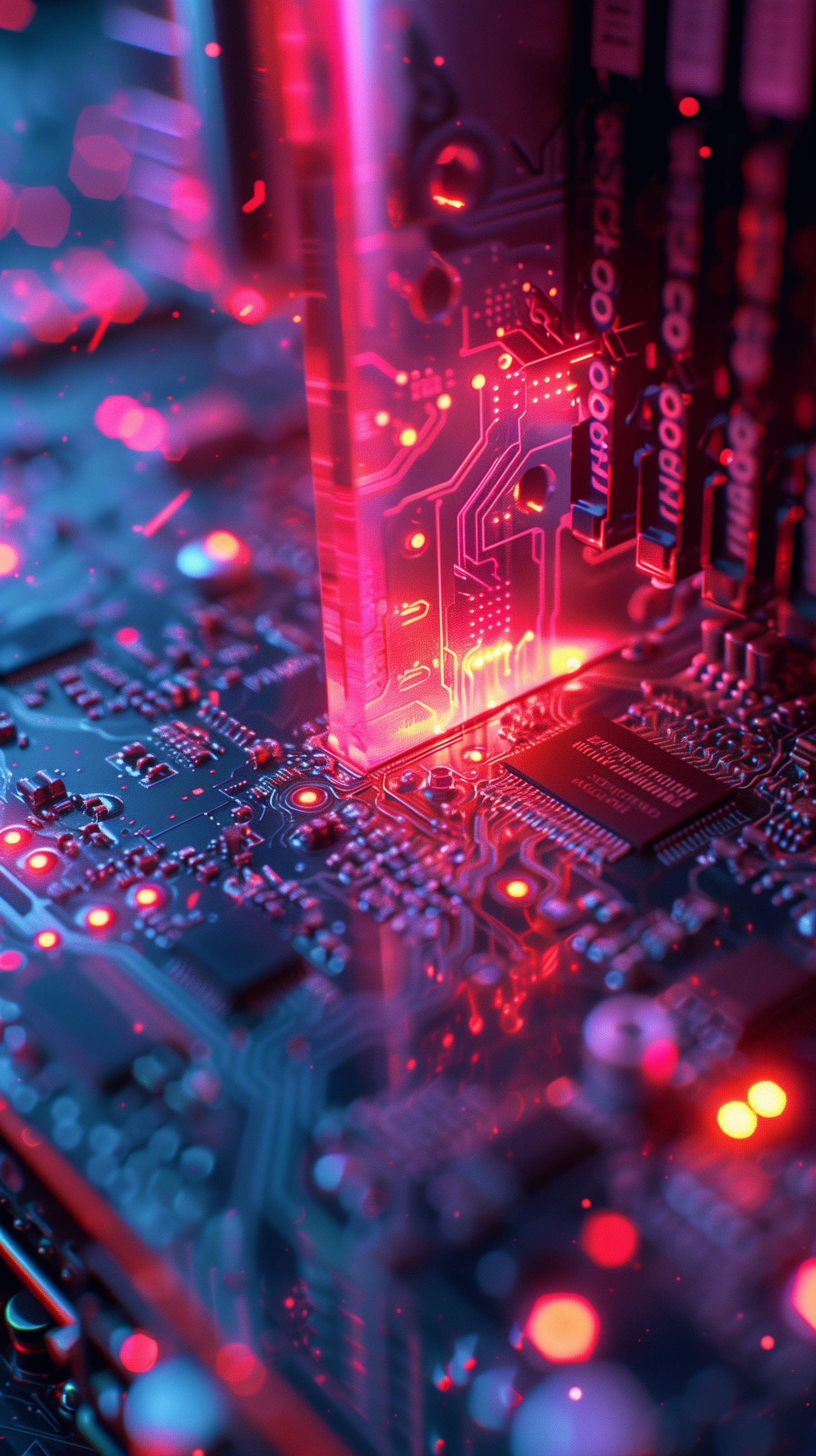

Your Roadmap to Smooth Computing: Wrapping Up Our Troubleshooting Guide
Troubleshooting common computer problems is like finding your way through a maze of potential pitfalls and dead ends. However, dealing with these issues can become more manageable by following an approach and having a good grasp of hardware, software, and networking components. This guide looks at the processes and methods for diagnosing and resolving computer problems, whether they involve hardware malfunctions, software bugs, or network disturbances.
Key Points to Remember:
Approach: Always begin with solutions before moving on to more complex ones. This helps prevent overlooking fixes and reduces steps
Comprehensive Analysis: When troubleshooting, take into account all aspects of the system—hardware, software, and networking. Issues often span these areas, so having a perspective for problem-solving is crucial.
Record Keeping and Communication: Maintain detailed documentation of your troubleshooting steps. This will aid in tracking progress and serve as valuable reference material for future use and sharing information with others.
Safety First: Understand the risks associated with computer troubleshooting tasks, especially when making changes to hardware or software. Prioritise safety measures and data protection at all times.
Seeking Professional Help: Acknowledge when an issue requires professional expertise. In critical settings like networks, it’s important to collaborate with experienced professionals such as network administrators or IT support specialists.
Encouraging Lifelong Learning: The field of computing and technology is always evolving, presenting challenges and solutions on a basic basis. Keeping up with developments and honing your troubleshooting skills are essential for anyone managing and maintaining computer systems. Whether you’re an enthusiast, a seasoned pro, or someone considering a career in IT, continuous learning and hands-on experience are invaluable.
This guide offers insights and practical tools for addressing various computer issues. If you encounter problems or feel overwhelmed, feel free to seek expert advice. Nimble Nerds provides support and guidance to ensure your systems operate smoothly and securely.
Please share this guide with others who may find it useful and keep exploring resources to enhance your knowledge and skills in the engaging realm of computers and technology.

- Service Coverage: All of Greater Sydney City
- Service Hours: Monday to Friday, 9 AM to 6 PM
- Emergency Services: 24/7 Critical Response Support
- Warranty: 30-day guarantee on all repairs
- Same Day Service At A Reasonable Price
Get In Touch
On-Site Computer Repairs Sydney Wide Services
- Canterbury-Bankstown
- Eastern Suburbs
- Hawkesbury
- Hills District
- Inner West
- Liverpool
- Lower North Shore
- Macarthur
- Northern Beaches
- Northern Suburbs
- Parramatta
- St George
- Sutherland Shire
- Upper North Shore
- Sydney CBD
- Western Sydney
Please Call To Book A Sydney Computer Repairs Sydney Technician
Lvl 17/9 Castlereagh St, Sydney,
NSW 2000, Australia
(+61) 02 8091 0815
info@nimblenerds.com.au
Social Links To Stay On The Tech Cusp - Please Give Us A Follow If You Like!
Computer Help Sydney-Frequently Asked Questions:
Where can I find computer help in Sydney?
You can find computer help in Sydney by contacting Nimble Nerds. We offer comprehensive computer support services and repair laptops across the Sydney, ensuring your issues are resolved quickly and efficiently.
What is computer support and services?
Computer support and services include technical assistance for Software, hardware, and network issues. This can involve troubleshooting, repairs, installations, and maintenance to ensure your computer systems run smoothly.
Why do I need computer help?
Computer help is essential for resolving issues that can disrupt your personal or professional tasks. Professional support ensures your desktop computer runs efficiently, securely, and reliably, preventing data loss and improving performance.
What is the role of a computer support executive?
A computer support executive provides technical assistance to users, addressing their software and hardware issues. They diagnose problems, guide installations and updates, optimize system performance, and ensure customer satisfaction.
How do I become a computer support specialist?
To become a computer support specialist, you typically need a background in IT or computer science, strong problem-solving skills, and experience with various computer systems. Relevant certifications and hands-on experience through internships or entry-level positions are also beneficial.
What types of computer issues do you fix?
We fix a wide range of computer issues, including hardware failures, software problems, network connectivity issues, and more. Our technicians are skilled in diagnosing and resolving these issues to get your system back on track.
Can you help with computer issues remotely?
Yes, many computer issues can be resolved remotely. Our repair technicians can provide remote computer help and support to fix problems quickly and efficiently.
How quickly can you provide computer help?
We offer rapid response times, often connecting you with a technician within 30 minutes. For immediate assistance, call us now.
Resolve your computer troubles today—call now and connect with a top technician within 30 minutes!
